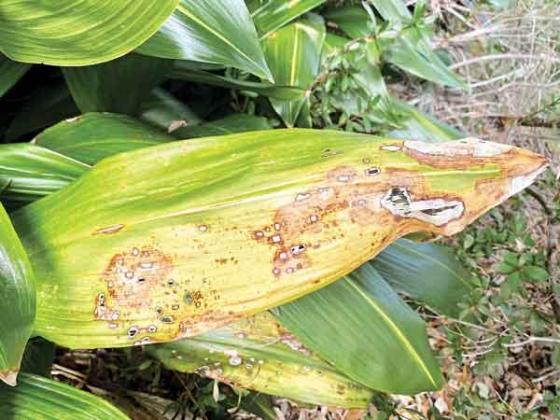
Heather Kirk-Ballard LSU AgCenter horticulturist
We all start out with good intentions and grand ideas when it comes to our gardens and houseplants. I have personally dreamed of having a gorgeous destination garden such as Longwood Gardens in Kennett Square, Pennsylvania; The Biltmore in Asheville, North Carolina; or Callaway Gardens in Pine Mountain, Georgia.
Alas, in my lifetime, this destination-level status will never be met — but hey, I can dream, right?
Sometimes our dreams of grandeur fall short because we lack the space, time and resources. In other cases, the problems are completely out of our control. I have been fighting with geese, squirrels and southern blight in my vegetable garden almost to the point that I have given up — almost.
As gardeners, we sometimes find ourselves in tough situations we just cannot figure out. We have placed the plant in the right place. We are watering correctly. Fertilizing correctly. Following all of the gardening rules.
Diagnosing plant problems can be tricky. Diseases, insects, bad weather, poor nutrition, poor soil quality, poor light — the list can go on and on. Many of these conditions have the same symptoms. Yellow or brown leaves, stunted or aborted fruit, flowers dropping and overall decline can cause us to step back and scratch our heads.
You can try to address your plant problems with some of the broad-spectrum solutions on the market, but you must consider their effects on good insects, beneficial organisms and the environment. It is better to pinpoint the issue and solve it at its root.
The LSU AgCenter offers many services that can help you — starting with parish extension agents. Many problems can be diagnosed with a simple email, phone call or photo. Go to the LSU AgCenter website to find out how to contact local extension offices.
For more complicated problems, the AgCenter offers a wide selection of services through the Soil Testing and Plant Analysis Lab and the Plant Diagnostic Center, both located on the LSU campus in Baton Rouge.
Sometimes the problem is linked to either soil or water quality. The pH of your water and soil can prevent the uptake of certain nutrients. In addition, excessive quantities of chlorides, sodium and other elements can cause toxicities.
Send in a soil or water sample, and the lab can determine what is out of balance. Nutrient issues can cause all sorts of problems with fruit production and foliar damage. The lab tests soil, the nutritional status of your plants, and irrigation and pond water.
Consult the lab’s website at bit.ly/3r5Eif3 for more information.
Insects, weed pressures and diseases cause other issues. The Plant Diagnostic Center is your one-stop shop for finding the underlying cause of these problems. Visit bit.ly/3ckhsfB to find factsheets, publications, an image gallery and management guides. You can also find information on how samples should be taken and submitted.
For those of you who are tech savvy, you can try apps on your smartphone to help you identify problems. Search for apps designed to help identify plant pests and disease such as Plant Doctor, Leaf Doctor, Purdue Tree Doctor and many more. There are many tools right at your fingertips to help solve your gardening problems.
